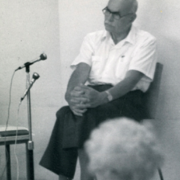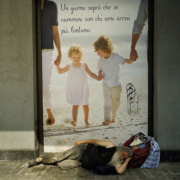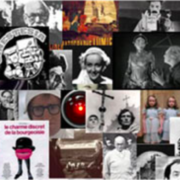Introduction. The mind-boggling experience of my encounter with Bion
The mind-boggling experience of my encounter with Bion. Bion’s thought cannot be put into any kind of order, above all his mystic thought. What he has shown us is how tenuous thought can be, how uncertain, how much it changes over time. Already in his triology, Bion gives evidence of post-modern thinking (indeterminism, breaking down of rules, irony, etc.).When I first read Bion’s work in 1978 I was thunderstruck: I experienced time-space disorientation and anger. Then I found myself reflecting openly on Nothing. It was Ignacio Matte Blanco who first introduced me to him by showing me a letter he had received from Bion praising him for something he had writter about him. Blanco’s esteem for this psychiatrist I didn’t know made a big impression on me. I attended Francesco Corrao’s seminars on Bion and found I was wavering. One of my colleagues suggested I read his clinical seminars ( Clinical Seminars and Four Papers , 1987 The Estate of W. R. Bion by arrangement with Mark Paterson) to get a better idea of what he was saying. I did, and a whole new world opened up to me, a world in which time takes on a completely different dimension and is almost suspended, a world in which through some area of Bion’s thought we are able to see into the inner life of the Other! I decided that I was going to learn how to go into a session capable of thought. but with very little memory or desire. In the 1980’s I began to systematically study Bion’s work in an attempt to understand. what he meant by ” Scientific Psychoanalysis”. Then in 2002 I came into contact with the “Bionists” in Sao Paulo and have been participating in the academic activities of the Brazilian Society of Psychoanalysts in Sao Paulo ever since. The fact that many psychoanalysts in Sao Paulo are the children or grandchildren of immigrants, means they have been influenced by a mixture of Western and Oriental cultures. I wonder how much Bion, with his Euro-Asian background (having immigrated to London From India and then to Los Angeles ) might have had in common with them. I suppose that psychoanalytic thought in Brazil — united as it is by the same language from Racife to Porto Alegre, from Brasilia to Rio de Janeiro, from Sao Paulo to Mato Grosso do Sul – has developed along the lines traced by Bion: greatly enriched by the basic assumptions structured on myth, oneric thought, dreams and hallucination coming from Europe, Asia, Africa and the Amazon and Atlantic Mata Indios. The present comes into contact with many different “pasts” all the time in Brazil. Thought about the future is fed from feelings and emotions from unknown lands that cut across the generations. I think it would be a good idea to compare this plurisyncratic culture with our own, “old world”, culture. This issue of FUNZIONEGAMMA is an attempt to compare these cultures on either side of the Atlantic with Bion, and Klein, as a common matrix .






